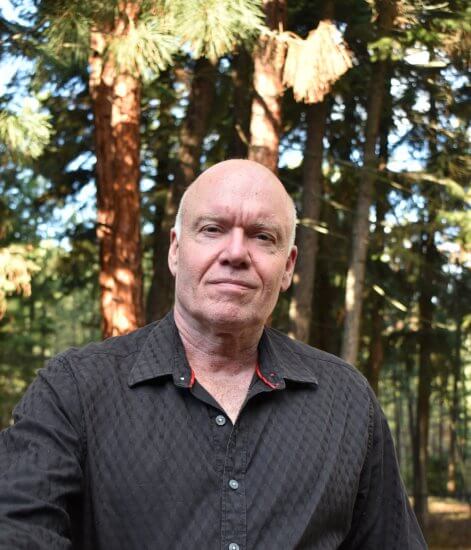Global Studio project earns SSHRC grant for RAIC Centre for Architecture
Athabasca University researchers have earned a $62,137 grant to support an international and interdisciplinary collaborative effort to improve architecture and design education.

Dr. Douglas MacLeod, head of AU’s RAIC Centre for Architecture, is the lead applicant for the initiative, “Design in a Post-Covid-19 World: Global Studio,” which the Social Sciences and Humanities Research Council (SSHRC) awarded the grant.
The Global Studio project is related to, but distinct from, the Global Studio Lecture Series project also led by the RAIC Centre for Architecture, which has seen hundreds of attendees from all around the world share professional-development seminars related to architecture and design.
“This work has considerably raised the profile of AU,” he said. “All of the sudden, people who have never heard of us are waking up to the wonderful opportunity we present.”
The current grant will keep up this momentum, but the funding will be directed toward students and educators internationally. Specifically, the funding will support things like lectures, workshops, curriculum building, design competitions, design reviews and critiques, online publications and exhibitions, virtual mentorships, and even an online simulated office environment.
This includes purchasing eight computer workstations that will be distributed to Global Studio partners around the world, including in Australia, South Africa, Nigeria, the United Kingdom, the United States, and Canada. Partner institutions will provide both faculty and student representatives to oversee these resources and lend them to students as required. Students can then use the equipment to collaborate on Global Studio initiatives and help create curriculum content.
“We want to be able to engage with the students, in particular, so part of the idea of this is co-creating content as open education resources that everybody could use, all around the world,” MacLeod said.
Three focuses
MacLeod explained the Global Studio focuses on international collaboration in design education, with the intention to make improvements in three specific areas: regenerative design, equity in design, and inclusive or universal design.
He described regenerative design as rethinking the buildings we live and work in to focus on not just reducing the energy input required to operate those buildings, but also in terms of creating buildings that produce more electricity than they use, clean more water than they pollute, and eliminate the use of volatile organic compounds that are common in building materials today.
“The reason it’s so important is because making energy efficient buildings is the fastest, easiest, and least expensive way of dealing with global warming,” he said.
With respect to equity in design, MacLeod said there are three components to consider here: working to diversify faculty and the workforce when it comes to architecture and architectural education; rethinking the curriculum to place less emphasis on the so-called “Western Canon” and more on what’s happening in other parts of the world; and identifying the structural barriers within post-secondary education that tend to leave out under-represented groups.
“We’re ahead of the curve at AU because we’re open and virtual, but I think we can do even more,” he said. For example, he would like to see more courses replacing textbooks with open educational resources, similar to what Dr. Dietmar Kennepohl did for his organic chemistry classes at AU, as way to keep education more affordable.
“The reason it’s so important is because making energy efficient buildings is the fastest, easiest, and least expensive way of dealing with global warming.”
Lastly, when it comes to inclusive design, MacLeod said there’s still lots of work to do on that front as architects don’t always design buildings with accessibility at the forefront of the process. Even if you put in an elevator, for example, but people with limited mobility have to go 100 metres to the other side of the building to be able to use it, then there’s significant room for improvement.
That same principle applies to all three of these focus areas—the key is to not just to treat these things as afterthoughts, but rather to incorporate these ideas right from the beginning of the design phase and keep them at the forefront through the entire design and construction process.
“If your approach to sustainability is to tack on some photovoltaic cells at the end of the design phase, then you really haven’t understood what it’s all about,” he said.
Learn more about the Global Studio and RAIC Centre for Architecture at AU, and register for classes today!